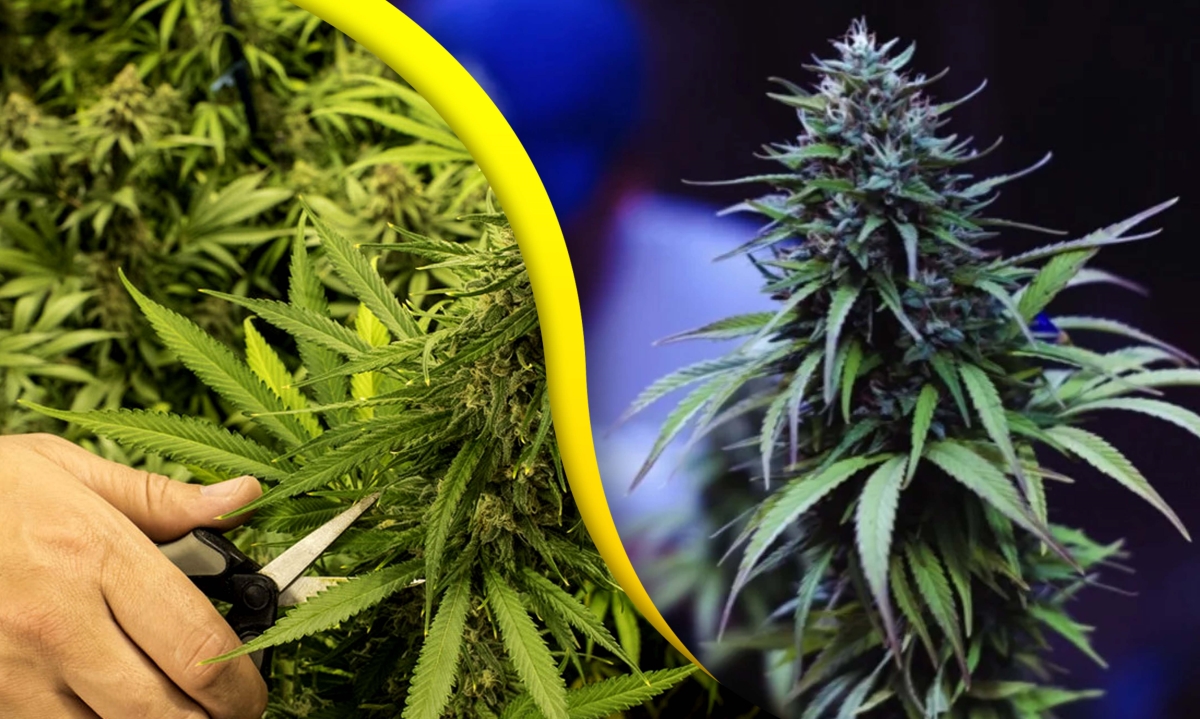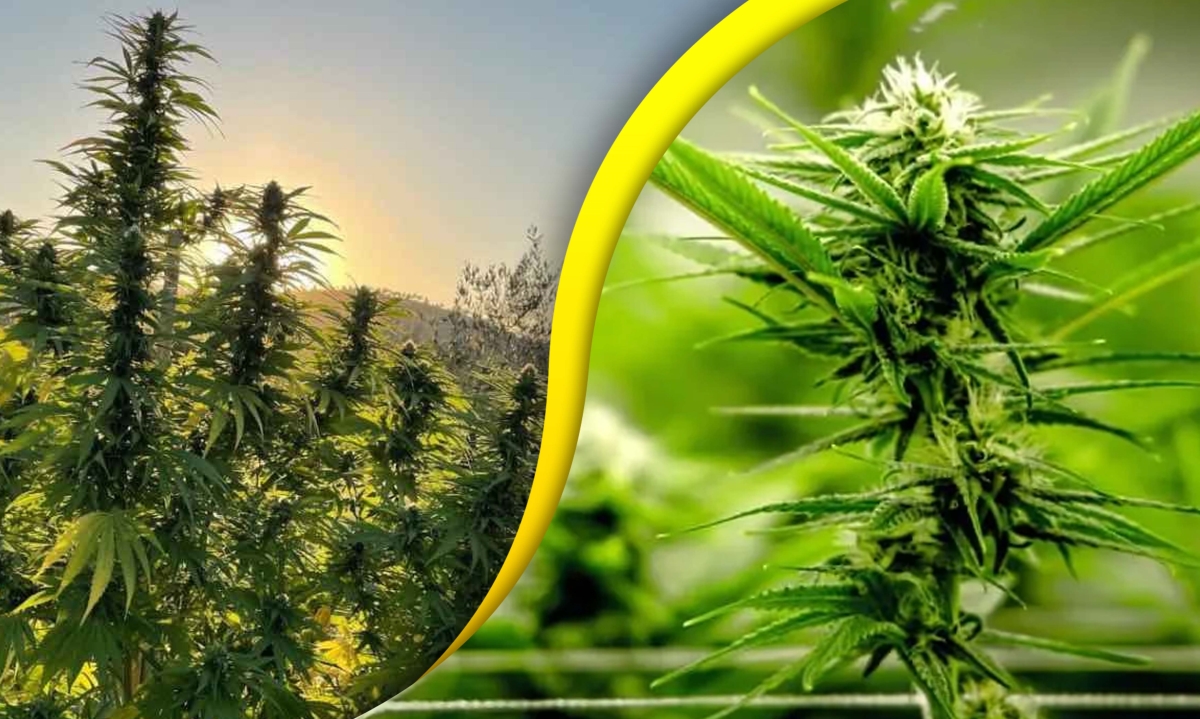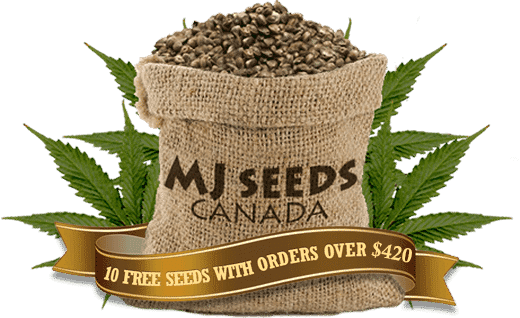A controversial discussion among cannabis growers focuses on lollipopping VS not lollipopping. The goal is to maximize plant quality and production. To enhance ventilation and nutrition supply to the higher canopy, lollipopping is specifically removes lower leaves and buds as opposed to leaving the plant unpruned.
Lollypopping preserves the plant’s overall vigor and natural development pattern, according to some, while others argue that it results in healthier, more prolific plants. To maximize harvests, growing cannabis necessitates a deep comprehension of the intricacies of lollipopping and how it impacts plants.
Table of Contents
What Is Lollipopping?
Schwazzing vs Lollipopping
Pruning vs Lollipopping
Defoliation vs Lollipopping
Lollipopping Weed vs. Not Lollipopping Weed
Lollipopped Plants
Non-Lollipopped Plants
Benefits of Lollipopping
How To Lollipop Weed Plants
Final Thoughts
What Is Lollipopping?

Lollipopping is sometimes referred to as defoliation, is an intentional trimming method applied to cannabis during its vegetative and early flowering stages. This technique requires removing the lower branches, leaves, and buds that receive minimal light and contribute little to the overall yield.
By doing so, growers aim to redirect the plant’s energy towards developing larger, more potent colas in the upper canopy. This technique helps to improve light penetration and airflow throughout the plant, reducing the risk of mold, mildew, and pest infestations. Additionally, lollipopping can enhance the aesthetic appeal of the plant, presenting a cleaner and more uniform appearance.
Schwazzing vs Lollipopping

Schwazzing and lollipopping are both techniques used in cannabis cultivation to enhance plant growth and maximize yields. Schwazzing involves heavy defoliation during the flowering stage, removing a significant portion of the plant’s fan leaves to increase light penetration and airflow. Lollipopping, on the other hand, focuses on selectively pruning lower branches and foliage during the vegetative stage to redirect energy to the upper canopy, improving bud development and overall plant health. While both techniques involve stress to the plant, when executed properly, they can lead to higher-quality yields.
Pruning vs Lollipopping
Pruning and lollipopping are both techniques used in plant cultivation but differ in their objectives and methods. Pruning involves selectively cutting branches, leaves, or stems to shape the plant, promote growth, or remove diseased or damaged parts. Lollipopping specifically targets lower branches and foliage to improve airflow, light penetration, and focus energy on top buds, enhancing yield and quality. While pruning is more general and can serve various purposes, lollipopping is a specific form of pruning tailored to cannabis cultivation.
Defoliation vs Lollipopping
Lollipopping involves selectively pruning lower branches and foliage to promote better light penetration and airflow, focusing the plant’s energy on upper buds. Defoliation, on the other hand, entails removing specific leaves throughout the plant to enhance light exposure and airflow without altering the plant’s overall structure. While both techniques aim to optimize growth conditions, lollipopping focuses primarily on pruning lower growth, whereas defoliation targets individual leaves to promote better light distribution.
Lollipopping Weed vs. Not Lollipopping Weed
Lollipopped Plants
Cannabis plants undergo lollipopping during the vegetative and early flowering stages. Lower branches and foliage are carefully pruned to focus energy on the upper canopy. As a result, these plants exhibit:
Improved Light Penetration: Fewer lower leaves blocking light means more direct sunlight reaches the higher canopy, which encourages strong growth and bud formation.
Enhanced Air Circulation: The removal of excess foliage facilitates better airflow within the canopy, reducing the risk of mold and mildew.
Increased Yields: Lollipop plants produce more high-quality flowers in greater quantities by focusing their efforts on growing bigger buds.
Reduced Pest and Disease Pressure: Lollipop plants are less prone to infestations and diseases because they have fewer hiding spots for pests and diseases.
Non-Lollipopped Plants
On the other hand, cannabis plants are also allowed to grow naturally without undergoing lollipopping. Lower branches and foliage remain intact throughout the growth cycle. Consequently, these plants exhibit:
Limited Light Exposure: Lower branches and foliage block light from reaching the lower portions of the canopy, resulting in uneven growth and smaller buds.
Poor Air Circulation: The dense foliage obstructs airflow within the canopy, creating an environment conducive to mold and mildew.
Lower Yields: Due to the energy expended on non-productive growth, non-lollipopped plants produce fewer and smaller buds compared to their lollipopped counterparts.
Increased Pest and Disease Vulnerability: The abundance of foliage provides hiding spots for pests and creates a breeding ground for pathogens, increasing the risk of infestations and diseases.
Benefits of Lollipopping
Enhanced Light Distribution
Removing lower foliage allows for better light penetration and distribution throughout the canopy. By ensuring that each area of the plant receives enough light, photosynthesis and growth are encouraged to their full potential.
Increased Airflow and Decreased Humidity
By eliminating excess foliage, lollipopping cannabis improves airflow within the canopy, reducing the risk of mold and mildew formation. This also helps maintain optimal humidity levels, creating a healthier environment for the plants.
Concentrated Energy
By redirecting energy from non-productive lower growth to the upper canopy, lollipopping encourages the development of larger, more potent buds. This results in higher yields and improved bud quality.
Pest and Disease Prevention
Diseases and pest infestations are less likely when lower branches and foliage are removed. It makes the growing environment more orderly and controlled, which facilitates the recognizing and management of any potential problems.
How To Lollipop Weed Plants
Lollipopping your weed plants is an essential technique to maximize your yields and enhance overall plant health. By removing the lower branches and foliage that receive less light and contribute little to bud development, you redirect the plant’s energy towards the top canopy where the most potent and productive buds form.
To lollipop effectively, start by identifying the lower 1/3 of the plant where light penetration is limited. Trim away any small, underdeveloped branches and foliage in this area, ensuring you leave the main stems intact. This allows for better air circulation and light distribution throughout the plant, reducing the risk of mold and mildew while promoting bud growth. Remember to sterilize your pruning tools before and after each cut to prevent the spread of diseases.
Additionally, consider using support stakes or trellises to help manage the weight of the remaining buds as they develop. With proper lollipopping, you can significantly increase your yields and produce top-quality cannabis that’s sure to impress.
Final Thoughts
In conclusion, lollipopping vs not lollipopping remains a topic of debate within the cannabis cultivation community. By focusing energy on the upper canopy, lollipopping encourages the formation of larger, denser buds, which improves quality and yields. By not lollipopping, the plant can keep its natural growth pattern and maintain overall health, offering possible benefits including increased ventilation, light penetration, and visual appeal.
Additionally, cultivators may maximize cannabis growth and maximize both quantity and quality by learning the technique of lollipopping. Through the adoption of accuracy, endurance, and flexibility, cannabis enthusiasts can unleash the complete potential of their plants, resulting in abundant yields of high-quality cannabis.
Frequently Asked Questions
1. Does lollipopping reduce yield?
Answer: Lollipopping is a technique used in cannabis production to improve light penetration and ventilation within the plant canopy. This method increases the quality and yield of the plant while reducing the risk of disease development and pest infestations.
Lollipopping creates ideal growth circumstances and encourages the creation of high-quality yields by focusing the plant’s energy on its highest buds.
2. Does Lollipopping actually work?
Answer: Yes, lollipopping is an effective technique in cannabis cultivation. By removing lower foliage and branches, it redirects the plant’s energy to upper buds, enhancing airflow, light penetration, and overall yield quality. Plant productivity and health can be greatly enhanced by lollipopping when done correctly.
3. Does lollipopping stress plants?
Answer: Lollipopping can induce minor stress in plants due to the removal of lower foliage and branches. But when done right during the vegetative stage, there is less stress and plants usually bounce back quickly, focusing their energy on growing higher in the canopy, which eventually leads to higher quality and production.
4. When should I start Lollipopping?
Answer: Begin lollipopping during the vegetative stage of cannabis growth, typically around the third or fourth week after germination. This stage allows the plant to recover swiftly from pruning stress and redirects its energy towards upper canopy development, maximizing the effectiveness of the technique for optimal yield and quality.
5. Does pruning increase flowering?
Answer: Yes, pruning can increase flowering in plants, including cannabis. By removing excess foliage, pruning redirects the plant’s energy towards flower production. This process improves light penetration, airflow, and nutrient distribution, stimulating the plant to allocate resources more efficiently towards flowering, ultimately resulting in a more abundant bloom.




